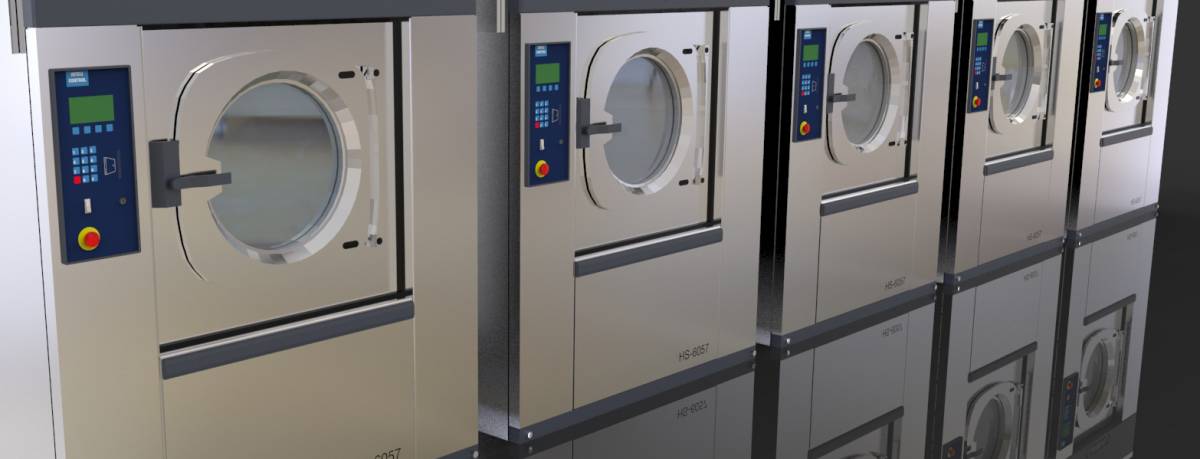Regardless of the load, laundry is a messy and frustrating job. Organizations such as laundromats, dry cleaners, hotels, uniform companies, and large cleaners need a lot of management, which means a lot of losses. Through the RFID optimization process, clothing can be tracked to the extent that losses are almost eliminated. Some of the challenges encountered include the secure connection of the tag, the durability of the tag, the read range, and the ability of the tag to store data. Fortunately, most of the situation has improved over the years. The tags have different frequencies and some are even waterproof. When choosing the right RFID tag to track clothing, you must consider what you want to track. Clothing, cushions, private sheets, and internal inventory may require different types of tracking or labeling. When handling clothing, uniforms or other items for external entities, how to integrate the marking process into the billing system is a major consideration.
Different types of tags are used in laundry tracking. High-frequency or low-frequency disc tags sewn to the hem of uniforms, clothing, linens, or running shoes. The disc looks like an ordinary button and can be easily stitched using standard stitching equipment or methods. Ultra high frequency tags (UHF) are very advanced. Hundreds of tags can be read at the same time. The material tends to be small and flexible. This material is also waterproof and is very suitable for washing clothes in a washing machine. Some labels have strong heat resistance and can be attached to clothing using heat patches. UHF laundry tags are very suitable for withstanding high temperature and high pressure. A classic laundry tag may contain a small antenna with a small chip that can be rewritten tens of thousands of times. Each tag also has a specific type of reader that can scan the data on the tag and enter it into the system. This makes it easy to verify the quantity and replenish the inventory when needed. You can save a lot of time when you don't have to manually calculate the total number of internal or consumer laundry.

Selecting RFID Tags for Laundry
Laundry Services & Dry Cleaning:If you buy a coat or other clothes that says "Dry cleaning only", you know you need to find a dry cleaner to clean the clothes properly. Dry cleaners have a huge responsibility to ensure that items are properly marked so that they can be returned to their owners. Nothing causes dry cleaning customers more inconvenience than the loss of expensive dry cleaning items. Such losses are detrimental to the dry cleaners, especially when compensating the owners for the items. RFID tags still follow the system in which each piece of clothing or linen receives its own identification number. However, labels can be written and scanned. Laundry services or dry cleaners need to use tags that can be easily attached to and removed from items because these tags will be reused. This is why tags must be rewritable so that new client data can be written to each tag each time it is reused. The same applies to laundry services. As more and more self-service laundromats provide services, so that busy people can lay down their laundry every week, so there must be a reliable system to track each item. After receiving the items, they can be labeled, cleaned and unlabeled, as they will be placed in bags or baskets for customers to take. This ensures that every item is taken into account.
Employers and uniform companies: uniform management runs through the entire life cycle of each garment. The required management level includes dispensing, daily use, cleaning and final disposal. For example, the army distributes uniforms to soldiers. These uniforms must be properly tracked throughout their life cycle. The soldiers will hand in their uniforms for cleaning. Although the soldier’s name is on the uniform, the speed of scanning each item is much faster, and the responsibilities are clear at a glance. Many unnecessary tasks can be avoided, the clothes can be processed in batches when needed, the inventory can be automatically counted to ensure uniform wear and tear, and worn uniforms can be replaced. Therefore, the staff always look their best. Other benefits include complete inventory management, easy identification and control of batches, easy locating of specific items, finding problematic uniforms and ensuring they are repaired, tracking the number of repairs and laundry cycles, managing staff assignments, and placing each item individually Instead of being in a group.
Hospitality & Hospitals: The hotel industry and hospitals also have many bed sheets that need to be tracked. If the hotel does not properly track the washing cycle, worn and high-quality linens, and the degree of obsolescence of the items, it is easy to have insufficient inventory or use old inventory that should have been destroyed long ago. Maintain the condition of bedding and towels, ensure that all items are cleaned after use, and reorder new items only when needed to provide a wide range of benefits, such as ensuring people’s safety and towels by ensuring that people use clean sheets, and Have a positive impact on the bottom line by avoiding premature replacements or inventory shortages. The RFID tags used to track clothing and bed sheets have had an incredibly positive impact on businesses and those directly involved. If you haven't used RFID for tracking, you will be amazed at the time saved, cost and overall convenience.

To learn more about this topic, please contact us.